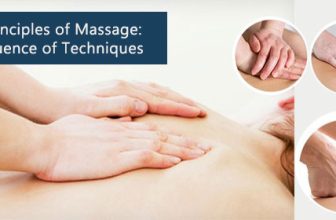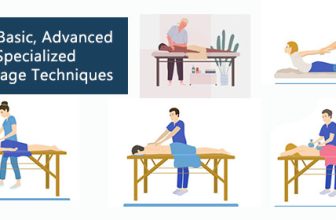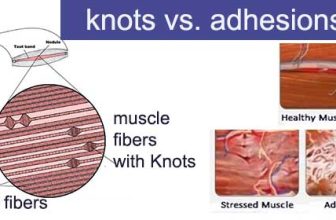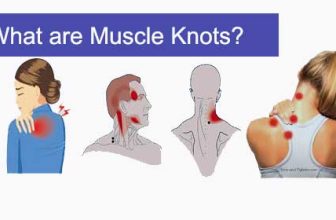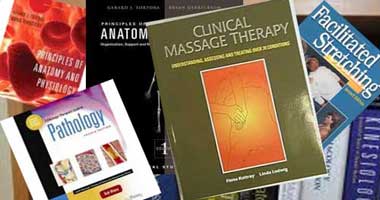
My friend who is going to Massage Therapy School asked me for the names of the textbooks we used in our Advanced Massage Therapy program. I decided to list them here along with our massage therapy course curriculum, course description, outline and course objectives for each class.
This list is useful for people who are thinking about going to Massage Therapy school. It is also beneficial to people who are already enrolled in a massage program so that they can study in advance and have a leg up before their program starts.
Massage Therapy Curriculum: Massage Classes List, Course Descriptions & Textbooks
A. First Year Classes
Below is a list of the courses and subjects we took in our first year of Massage Therapy school.
1. MASSAGE THEORY & MASSAGE CLINICAL (Basic)
Course Textbook: Clinical Massage Therapy by Rattray and Ludwig – In my opinion, this is our most important textbook in Massage Therapy School. I used this book mainly and extensively when I was studying for the massage board exam.
Class Description & Course Objectives:
With the introductory and basic Massage Clinical (also called Massage Practical) and Massage Theory class, the student will gain an understanding in both the theoretical knowledge and clinical skills required for the application of massage therapy. The training will progress logically to ensure that the student reaches the following Massage Therapy course goals:
– By the time the student’s clinic experience begins, they will be able to give a general relaxation massage, take a brief case history and note contraindications. The student will be able to communicate professionally with clinic patients. (Note: clinic experience starts at about two months into the course where fellow massage students and outside clients come to the school to get massage treatments at a lower cost – while the students clock in their required clinical hours).
– By the end of the first term, the massage therapy student will know how to assess and analyse posture and body alignment, and test the range of motion of the joint complexes. The student will also be able to use a moderate level of palpative skills (palpation is the process of using one’s hands to examine the body, especially while perceiving/diagnosing a disease or illness).
– By the end of this course, the students will also have the general knowledge and clinical skills to effectively assess, manage and or treat several musculoskeletal disorders and other pathological conditions.
2. REMEDIAL EXERCISES I
Course Textbook: Facilitated Stretching by McAtee and Charland
Remedial Exercises I – Course Description & Class Objectives:
– In this class, the students will examine flexibility, the theory of stretching and the different modes of stretching for major muscle groups. Students will gain an understanding of the importance of the human body’s interaction with the environment. This subject also serves as the foundation for Remedial Exercise year 2 class.
– The course goal for this class is for students to understand the basic principles of strength training, ergonomics, fitness and flexibility as it applies to patient care.
– In this subject, the students will learn ergonomics, physical activities, strengthening and stretching exercises that they can advise to patients to supplement their massage therapy treatment.
Topics: Flexibility, Stretching, Ergonomics, Basics of Strength Training, Fitness
3. PHYSIOLOGY
Course Textbook: Principles of Anatomy and Physiology by Tortora and Derrickson
Physiology – Course Description & Class Objectives:
– To examine the major body systems, in order to expand students’ knowledge of how the body works
– To build a foundation of knowledge which the students can apply to future courses in their massage therapy profession.
4. PATHOLOGY
Course Textbook: Principles of Anatomy and Physiology by Tortora and Derrickson
Pathology – Course Description & Class Objectives:
– To examine the basic principles of pathology and to expand students’ knowledge on a variety of disease processes
Topics, Cell Adaption Injury and Death, Inflammation, Infection, The Immune System, Wound Healing, Genetics and Neoplasia
5. GROSS ANATOMY I
Course Textbooks: Principles of Anatomy and Physiology by Tortora, Muscle Manual by Dr. Vizniak, Clinically Oriented Anatomy by Moore and Dalley, Atlas of Human Anatomy by Dr. Frank Netter
Gross Anatomy 1 – Course Description & Class Objectives:
– This course is designed to teach first year massage therapy students the essentials of musculoskeletal anatomy.
6. SYSTEMS ANATOMY and NEUROBIOLOGY
Course Textbook: Principles of Anatomy and Physiology by Tortora
Systems Anatomy and Neurobiology Course Objectives and Topics:
– Introduction to Anatomy, Definitions, Methods and Techniques of Anatomy Body Systems, Regions of the Body, Levels of Organization, Tissues of the body, Introduction to the Nervous System, Development of the nervous system, cellular anatomy of the nervous system, Physiology of the Nervous System, Spinal Cord Anatomy, Reflexes, Spinal Nerves, Dermatomes and Myotomes, The Brain and Cranial Nerves.
7. HYDROTHERAPY
Hydrotherapy Course Objectives:
– Students will gain an understanding of the properties of water and how these properties affect physiological responses in the body
– Students will learn basic hydrotherapy applications that can be incorporated into massage therapy treatments and into your everyday life
– To give students an understanding of the more common hydrotherapy applications that will come across throughout the student’s massage therapy career.
B. Second Year Massage Therapy Classes — Curriculum and Course Descriptions
The following lists the courses and subjects we took in our second year of Massage Therapy school.
1. MASSAGE THEORY & MASSAGE CLINICAL (Advanced)
Class Textbook: Clinical Massage Therapy by Rattray and Ludwig
Advanced Massage Therapy Class Objectives and Course Description:
The general objective of this course is:
(1) To provide students with an opportunity to solidify their understanding of the theoretical components of the treatment disorders commonly seen by massage therapists, and
(2) To provide opportunity to achieve excellence in the practical skills required to effectively treat musculoskeletal disorders.
This class is about actively integrating the massage therapy student’s knowledge and skills and approach into treating and or managing various physical problems and conditions.
Subject Format: The second year Massage Theory and Practical will be conducted with part lecture, and part instructor demonstrations. The class will also conduct student presentation and hands on practice. For the hands on practice, a portion of class time will be allotted for students to work in pairs to practice the hands on portion of the material prepared (Specific Massage Therapy treatments, Orthopedic Tests, Landmarking, etc). It is recommended that students try to work with a different partner for each practical session. Questions and Feedback are encouraged during practical massage classes.
Class Evaluation: Theoretical knowledge and clinical skills will be evaluated on a regular basis.
2. PATHOPHYSIOLOGY
Class Textbook A Massage Therapist’s Guide to Pathology by Ruth Werner
Pathophysiology Course Objectives and Course Description:
The Pathophysiology class is designed to build upon the knowledge gained from Physiology 1 and Pathology 1. The objective being to give the students the tools needed to develop appropriate treatment plans for specific conditions that may present themselves in their Massage Therapy practices in the future.
The pathogenesis, etiology, signs and symptoms, as well as the benefits of massage will be examined. Students will learn about a number of diseases and disorders for each of the organ systems.
3. KINESIOLOGY
Class Textbook: We were given handouts and notes from various Kinesiology textbooks (sorry I don’t know their titles )
Kinesiology Course Objectives and Course Description:
– Students will develop an understanding in the area of human movement and exercise prescription as it applies to the student’s career as a massage therapist.
– Students will develop knowledge of the forces and laws of physics which act on the human body when stationary and in motion.
– Students will be able to analyze individual body segment motions during exercise
Kinesiology Course Outline: Topics include, Motion, All Body Joints, Planes, Biomechanics, Muscle Fibers, Neuromuscular Physiology, Stationery Kinetics, Goniometry and Muscular analysis,
4. GROSS ANATOMY II
Class Textbooks: Principles of Anatomy and Physiology by Tortora, Muscle Manual by Dr. Vizniak, Clinically Oriented Anatomy by Moore and Dalley, Atlas of Human Anatomy by Dr. Frank Netter
Gross Anatomy II Course Objectives and Course Description:
The course emphasizes the study of the joints of the human body. It serves as an opportunity for students to review the musculoskeletal anatomy learned in the first year anatomy course.
Gross Anatomy Lab: Gross Anatomical Specimens
5. REMEDIAL EXERCISES II
Class Textbook: Therapeutic Exercise — Techniques for Intervention by Bandy and Sanders
Remedial Exercises II Course Objectives and Course Description:
– In this class, students are to examine the goals of therapeutic exercise.The importance and development of core strength and stability will be discussed and students will learn how to investigate the principles of cardiovascular and muscular systems, ranges of motion and re-examine flexibility and the different modes of stretching for major muscle groups.
– Students are to review basic strength principles and explore resistance exercises in more depth
– Students are to develop a remedial exercise program for specific conditions
6. NUTRITION
Nutrition Class Course Objectives and Course Description:
– The goal of this class is to introduce the science of nutrition and its relation to health and disease.
– Students will be able to understand the physiological process of the digestion and absorption of nutrients in the body.
– Students will become more familiar with nutrition trends.
In addition, here is a link to the CMTO (College of Massage Therapists of Ontario) Massage Therapy Registration Examination approved References:
